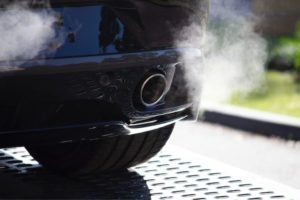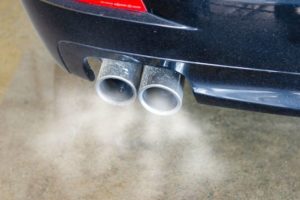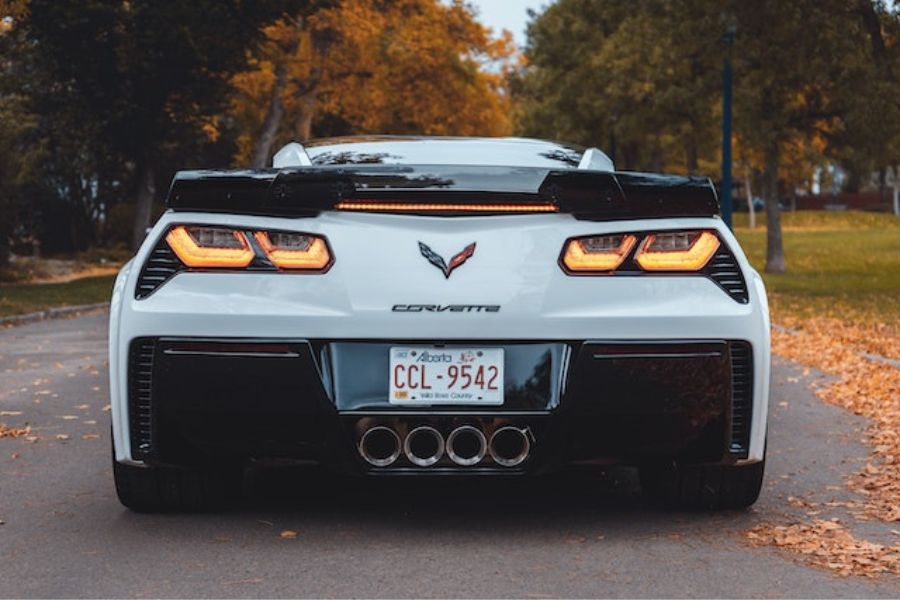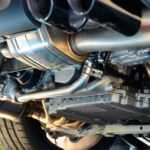Quick Navigation
As a driver in Queensland, you should know the existing emissions laws to be on the right side of the law.

Government exhaust laws help protect the environment by reducing air and noise pollution. Noise pollution laws also ensure the quality of life in neighborhoods.
Exhaust laws have been in place since the 1970s, and the Australian government is constantly revising them.
There are stricter laws for new vehicles to limit air pollution and reduce global warming.
This article will give you an overview of Queensland’s emissions regulations so you can drive legally and safely.
It’ll also give you a deeper understanding of what is required of you.
Reasons Why Exhaust Laws in Queensland Exist
The exhaust laws in Queensland are there to reduce the number of pollutants emitted from vehicles.
There is a range of regulations covering everything from the type of exhaust you can fit into a car to the noise it makes.
Let’s explore some of these.
Exhaust Laws in Queensland
According to the 2009 Road Traffic Guidelines, you may not intentionally start a vehicle in such a way as to create excessive noise or smoke.
Rule 291 clearly states that you must also not drive in such a way as to create excessive smoke or cause unnecessary noise.
In addition, you must turn off your vehicle’s engine when you are not driving unless you are repairing the engine.
Causes of Excessive Noise in a Vehicle
Unacceptable excessive noise could be the noise of an instrument or the playing of loud music while driving a car.
It could also come from an inefficient muffler in the exhaust system. Excessive noise can also come from vehicles in poor condition or heavily loaded vehicles.
Modifications to the engine or adjustments to the vehicle can also result in illegal excessive noise or smoke.
Causes of Excessive Smoke in a Vehicle
Excessive exhaust smoke pollutes the environment. It may be due to engine wear, fuel quality, or the emission control system.
Poor maintenance also leads to smoke. It’s important to distinguish between smoke and burnout.
Burnout is when smoke comes out of the wheels when the driver tries to regain traction.

Penalties for Breaking Rule 291 in Queensland
Excessive smoke and noise are reasons enough for the police to impound your vehicle. Failure to comply will result in a $2611 fine.
Burnout is also illegal and can result in the immediate impoundment of your vehicle.
Hooning-driving recklessly on the road to attract onlookers is illegal. It could be playing loud music while driving or burnout.
Police can immobilize your vehicle for 30 days, up from 48 hours, under the 2011 revision of the laws.
These are serious traffic violations, and the state is free to declare your vehicle state property if it happens again.
Also, police will add three penalty points to your driver’s license if you commit these traffic violations.
Queensland Exhaust Noise Limit
Noise limits for most vehicles are 90 decibels, and for motorcycles, 94 decibels.
Can You Drive Without a Muffler in Qld?
Driving without a muffler is illegal in Queensland because it causes excessive noise and smoke.
Here are more reasons why you should only drive with an appropriate exhaust.
Exhaust Regulation in Queensland: Modifications
Exhaust modifications are legal as long as they do not interfere with the fuel or brake system, steering or suspension.
They must also comply with Australian Design Regulations (ADR) for exhaust emissions.
For example, any vehicle built after January 1986 must have an exhaust system that complies with ADR regulations.
It must also meet noise limits, tailpipe emissions guidelines, and safety standards.
Modifications to the vehicle can be minor, basic, complex, or specific. Minor and basic modifications do not require approval.
Motorcycles manufactured on or after January 2006 must comply with ADR 83/00 and have a stationary noise limit.
All motorcycles manufactured on or after July 1988 must be equipped with all parts of a muffler system and marked with the manufacturer’s trade name.
Spare parts used to replace the system must also bear the manufacturer’s name.
When Do Modifications Need Approval?
Before modifying your exhaust, you must familiarize yourself with Queensland laws to avoid being fined or having your vehicle impounded.
Download the Queensland Road Vehicle Modification Handbook for more information.
It’s best to speak with a licensed person before making any modifications so you do not get frustrated when the authorities declare your vehicle is not fit to be on the road.
Remember that if you modify your exhaust system to make it louder, you will pay a fine because it is illegal.
Approvals for Complex or Specific Modifications to the Exhaust System
If you’re looking to make complex or specific changes to your exhaust system, there are a few things you need to know.
Firstly, any changes or modifications need approval from the Department of Transport and Main Roads (TMR).
TMR will review your proposed modifications to check that they meet legal requirements.
In particular, they’ll be looking to ensure your vehicle complies with noise emission standards.
It’s important to note that even if your modifications don’t require approval, they still need to meet the legal requirements for noise and emissions.
So, if you’re in doubt, it’s best to get in touch with TMR and discuss your plans.

How Are Exhaust Laws in Queensland Enforced?
The police will pull you over and do a decibel check on your vehicle, especially sports cars.
Using a handheld device, they measure your exhaust at a 45° angle below the horizontal.
You can also drive through a checkpoint or have your exhaust tested with the vehicle stationary.
If you fail the road test, the police will tow your car to a state-approved testing station for further emissions testing.
How to Ensure You’re Compliant
To ensure that your vehicle’s exhaust complies with Queensland laws, you must bring it in for inspection.
A certified mechanic will inspect your vehicle and let you know if any parts need replacement or repairs.
You’ll also need to ensure that any major modifications have been approved by the Queensland Department of Transport and Main Roads.
That includes additional pipes and modifications to the catalytic converter or muffler.
When inspecting your vehicle, look for signs of damage to the exhaust pipes, as this could indicate a problem with the system.
Also, have the certified mechanic check for leaks and clogs that could affect performance.
Finally, remember to ensure that all components are securely fastened to minimize noise interference and maximize efficiency.
Further Penalties for Failing to Comply with Exhaust Laws
If you fail to comply with the exhaust laws in Queensland, there can be severe consequences.
Owners of vehicles that blow off smoke from the exhaust or are too loud will face the full force of the law.
The Motor Vehicle Registry (MVR) is authorized to issue a defect notice.
That can have significant implications, such as preventing vehicles from being registered or transferred until they are roadworthy.
In addition, non-compliance can result in up to 60 penalty units and possible court action.
If a vehicle currently registered in Queensland is suspected of having tampered exhaust components – if it’s too loud – police have the power to inspect it on the spot and fine the driver or owner if it fails the test.
It’s also important to remember that an illegally modified exhaust system may void your car insurance coverage if you’re involved in an accident.
Takeaway
Get to know the exhaust laws and offenses to be on the right side of the law.
Remember to stay updated on the current Queensland exhaust laws, penalties, and consequences, and regularly check your car.
If you’re in trouble, speak to a traffic lawyer specializing in vehicle laws.

Patrick started his love affair with cars in his childhood. Over the years, he claims a sturdy hold on his driving skills, along with a thorough understanding of cars. We can expect some interesting, holistic, and pleasurable blogs with his flair for writing and his love for cars.
Being a car enthusiast, Patrick has experience comprising of two decades in which he has ridden some of the meanest and strongest machines in the automotive industry. His previous avatars include an automotive professional, photographer, and journalist, and you will certainly experience the roundness of experience in his piece on this site.
In his second decade of reviewing cars and analyzing tools, Patrick is all set to give you convincing, reliable, and the latest information regarding what’s happening in the automotive industry. Currently, he owns a BMW Z3 but cannot get his eyes off Aston Martin DB5. He is a car enthusiast; he loves cooking and listening to music, especially jazz. Here are some of the pieces written by our ace author.







